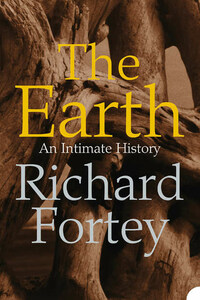The Earth: An Intimate History

This ebook edition does not include illustrations.‘The Earth is a true delight: full of awe-inspiring details… it blends travel, history, reportage and science to creat an unforgettable picture of our ancient earth.’ Sunday TimesThe face of the Earth, criss-crossed by chains of mountains like the scars of old wounds has changed constantly over billions of years, and the testament of the remote past is all around us.In this book, Richard Fortey teaches us how to read its character, laying out the dominions of the world before us. He shows how everything – human culture, natural history, even the shape of cities – roots back to a deeper geological truth. Far from being the driest of sciences, he proves that geology informs all our lives in the most intimate way.Nothing in this book seems to be at rest. The surface of the Earth dilates and collapses; seas and mountains rise and fall; continents move. We climb the Alps, wallow in Icelandic hot springs, dive down to the ocean floor; we explore the barren rocks of Newfoundland, walk through the lush ecosystems of Hawaii, cross the salt flats of Oman and saunter along the San Andreas Fault. And Fortey is the ideal guide, his descriptions of natural beauty as memorable as the best travel-writers, his prose as gripping as the best novelist, his crystal-clear scientific explanations fascinating and often surprising.Note that it has not been possible to include the same picture content that appeared in the original print version.







